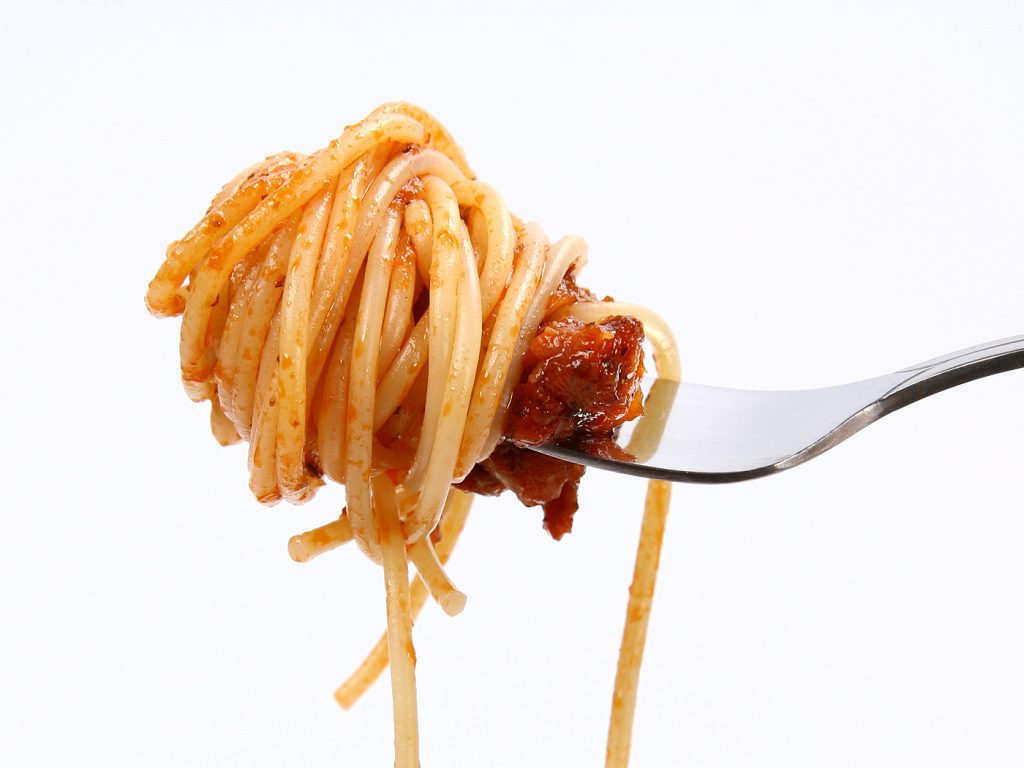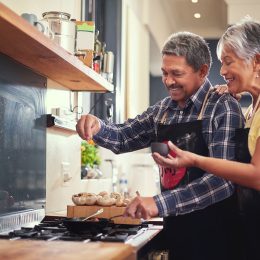¿Cuántas calorías debo consumir al día?
The answer varies. Here’s how to figure out your target range.

If you want to maintain a healthy weight, it makes sense to keep an eye on your calorie intake. But what's a good target? How many calories you should you eat each day to help your overall health? Here's how to determine your needs.
Start Your Calorie Calculation Here
According to the current Dietary Guidelines for Americans, adults in their 60s and older should vary their calorie intake based on activity level.
If you’re not physically active: Aim for at least 1,600 calories per day. You’re “not active” if you don’t intentionally exercise or at least do some moderate to brisk walking every day.
If you’re moderately active: Strive to eat around 1,800 calories per day. Moderate activity is defined as walking between 1.5 and 3 miles per day at a pace of 3 to 4 miles per hour in addition to going about your regular life, according to the guidelines. If you take a SilverSneakers class or do a gym workout occasionally, you’re most likely in this category.
If you’re active: Eat about 2,000 calories a day. You’re active if you walk more than 3 miles a day at 3 to 4 miles an hour in addition to your regular activities, according to the guidelines. If you take a SilverSneakers class or do a gym workout three days a week or more, you’re most likely in this category.
Healthy eating and fitness go together! SilverSneakers classes and events are happening daily at participating gyms, online through SilverSneakers LIVE, and at community centers near you. Activate your free online account to get started.
You may notice that you were encouraged to eat a little more in your 20s, 30s, and 40s. That’s because, as people age, they tend to be less active and certain bodily processes, like your metabolism, slow down, explains Jessica Cording, R.D., a dietitian in New York.
Older adults are also more likely to have muscle loss, which reduces the number of calories your body needs. Why? Muscles burn a lot of calories, says Sonya Angelone, R.D.N., a spokesperson for the Academy of Nutrition and Dietetics. This is one reason why strength training is highly recommended for older adults.
What If You’re Still Gaining or Losing Weight?
The guidelines are just that: guidelines. "They're a good place to start," says Angelone. But, she adds, there are many factors that can impact your calorie needs, including what you do during the day, your specific exercise habits, and your health.
“Even a slight miscalculation can lead to weight gain or weight loss over the years, especially if a person’s appetite is not good,” she says.
If you're following these general calorie recommendations and are still under or over your goal weight, ask your doctor or a registered dietitian for guidance on what to eat and drink. They should be able to give you advice on where you may need to tweak things, as well as make adjustments that make sense for you, your lifestyle, and your budget, Cording says.
Where Your Calories Come From Matters
The U.S. Department of Agriculture reports that seniors have the highest diet quality compared to other age groups. But most seniors still come up short in meeting the recommendations for the various food groups and nutrients. The Dietary Guidelines encourage upping your intake of fruit, vegetables, whole grains, and dairy.
Also a top priority for older adults? Protein. This nutrient is vital for helping slow down and prevent age-related muscle loss. In addition to the obvious animal sources of protein, keep foods like beans, lentils, peas, nuts, seeds, and soy products on your grocery list. You can find a list of the best plant-based proteins here.
Suscríbase a nuestro boletín informativo
Es rápido y fácil: Usted podría estar entre las 13 millones de personas elegibles.
¿Ya es miembro? Haga clic para descubrir nuestros más de 15,000 centros participantes.
Síganos
The healthiest eating patterns for older adults are built around nutrient-dense foods (think those veggies and whole grains). They’re also light (very light) on ultra-processed foods (think packaged snack cakes and frozen pizza) and added sugar.
Recommended FREE SilverSneakers On-Demand Class: Eating a Varied Diet for Seniors
¿Quiere más consejos útiles sobre nutrición?
Qué son los alimentos ricos en nutrientes (y por qué debería comerlos más)
What Are Ultra-Processed Foods, And Should You Avoid Them?
La Guía de SilverSneakers de alimentación sana para personas mayores
Weight Loss Basics for Older Adults
7 Common Weight Loss Mistakes People Over 60 Make
How to Gain Weight in a Healthy Way
6 Foods You Should Never Eat for Breakfast
The New Food Pyramid for Older Adults
6 formas simples de comer menos azúcar, sin renunciar a los postres
Activate Your FREE SilverSneakers Online Account
Get hundreds of free SilverSneakers On-Demand videos and stay in touch with us by creating your free online account. You don’t have to be a SilverSneakers member to get on-demand workout videos, health and fitness tips from SilverSneakers, and more.
SilverSneakers members can go to thousands of nationwide gyms and fitness locations, plus take SilverSneakers LIVE online classes led by specially trained instructors and designed for all fitness levels and abilities – at no additional cost. If you have a Medicare Advantage plan, it may include SilverSneakers. Check your eligibility here.
Already a member? Get your SilverSneakers member ID, search for locations near you, and all the health and wellness resources you need by logging in to your online member account here.





